Great American Eclipse wanderlust, day 11: The big day
Day 10 may be found here.
I don’t usually carry a cell phone, because of the possibility of accidentally taking it into my office (in a secured building) and having an unpleasant character-building experience as a result. So Cindy had to inform me that it’s possible to set your phone to ring at a set hour. Could explain why wake-up service at hotels has gotten so unreliable; hardly anyone uses it any more.
Anyway, after much fiddling, I was able to figure out how to set the alarm for 4:30 AM. Naturally, I wake around 4:00 AM. I doze uneasily until the alarm goes off.
I save breakfast for later, and get right to work taking down my tent and rolling up my air mattress and sleeping bag. I’m ready to go within half an hour and pull out onto the highway. Traffic is pretty heavy for five in the morning on a Monday, but hardly bumper to bumper. Venus is bright in the morning sky, and dawn slowly breaks as I head south.
Trucks pass me going the other way. Poor guys, having to work instead of staying around for the eclipse. Also some passenger cars; don’t they know they’re headed the wrong way?
I pull off the highway at my pre-scouted exit. There is some traffic but, again, hardly bumper-to-bumper. I top off at the gas station at the exit, for which I will later be grateful. The parking lot at BYU-Idaho where I have a reserved slot is about a quarter full. The flunky checks my name off the list, instructs me to pick up a wristband from a table in the middle of the lot, and waves me through. They have my name … and only my name. I look in my packet; one wristband. Jeremy is going to be sore if they don’t let him in.
It takes several trips, but I get all my stuff out onto the grassy field where I have a reservation to watch the eclipse.
Camp chair, big telescope with the solar filter already in place, giant binoculars (for totality), my camera equipment, books, and a sack lunch. With some time on my hands, I eat breakfast.
Notice my shadow. It is still before sunrise; the field has floodlights. Gosh, I hope those don’t come on during totality …
I notice that the field appears to be an old backfilled quarry.
Basalt. With what looks like marks from quarrying.
The field begins to fill.
I get to know some of my neighbors. On one side is a young family from Logan, Utah; the husband, like my brother, is a professor at Utah State. On the other side are some older couples, with a fair amount of photographic equipment. They, too, wonder if the floodlights are going to come on in the middle of the eclipse. There is a hostess of sorts on the field, employed by the grounds department of the university. I ask, and she reassures me that the lights are on timers, not photocells, and she has made extra sure they will not come on. Good.
One of older women has brought a bunch of extra eclipse glasses, and offers me a pair. I take them gratefully. Seeing the sun through a filtered telescope, or even filtered binoculars, is not quite the same as just looking up.
Jeremy Conlin, his two middle kids Brigham and Lily, and his mother-in-law arrive. His wife, Trish, and youngest daughter, Emma, are down with respiratory infections, and his oldest daughter, Anna, did not feel she could skip school. Apparently the eclipse turnout was less than expected in Rexburg, because all Jeremy had to do was mention my name and they got waved to a parking space. And no one seems worried about wrist bands at this point. By now the sun is up and I’m looking at it through the filter. There are a couple of good sunspot groups, including one near the east limb. I’m figuring we may see a prominence there.
Passersby show interest in the telescope. I invite anyone interested to take a look. There are a number of Asian visitors, and I am a little surprised that they ask politely to have their picture taken next to the telescope, but do not ask to look through it. I let them take the picture and then invite them to look through the telescope, and they invariably are delighted. I suspect, and will later confirm with people I know who have spent some time in the Orient, that asking to take the picture is considered polite in Asian culture but asking to look through the telescope is considered pushy.
The American, and one Swiss, passersby have no such qualms. One fellow asks if he can try to take a picture through the telescope using his cell phone. Well, why not? He actually gets a decent shot. This motivates me to try with my camera. It turned out to be very difficult but I did get one shot showing sunspots.
Yeah, the centering is off, but you can see some spots.
Bruce Rabe and his friend Linda arrive.
Bruce is the gentleman at left with the smaller telescope. Mine is really overkill for an eclipse; Bruce’s is more practical. But the big one is the only one I own. Linda is standing just behind my scope, and Jeremy and Lily are seated at right. I believe the fellow talking with Jeremy is the Swiss visitor I spoke of.
I’ve known Bruce for years but this is the first time I get to meet Linda. Bruce has been to six? seven? eclipses before, and took Linda with him to two previous ones. Evidently they never get old. The eclipses, I mean.
Jeremy has an app on his Ipad for the eclipse. He sings out that first contact is imminent. I watch through the telescope. Sure enough, in a few moments the edge of the Moon is visible cutting across the edge of the Sun. It will take another 45 minutes or so for the Moon to drift squarely in front of the Sun and give us totality.
A cub reporter from the BYU-Idaho school paper materializes and starts interviewing Bruce, Linda, and me.
Bruce notes that we three are a Mormon, a Buddhist (that would be Linda), and an atheist; we ought to walk into a bar and see if a joke happens. The interview is a lot of fun. Bruce offers two analogies for the difference between a 99% eclipse and a total eclipse. The polite one is that it’s like driving 99% of the way to Disneyland. After several minutes of having a great time talking to the reported about eclipses and eclipse phenomena and such, the reporter discovers that she has not turned on her recorder. Well, shucks. She repeats the interview, and we find out later it was actually broadcast, but it’s just not the same the second time.
I try to sell her on the idea of becoming a science journalist. We don’t have nearly enough good science journalists in this country. Most of the science stories I read in the press are appallingly bad.
Jeremy has been watching the partial eclipse through my telescope. He announces with surprise there are visible peaks and valleys around the edge of the Moon. I look; he’s right. Very cool.
It gets noticeably cooler. Jeremy has a thermometer app and tracks the falling temperature. I feel like it is getting noticeably darker, though Jeremy is skeptical we can perceive any drop in light level this early in the eclipse. The remaining sliver of sun grows thin, as seen through the ever-present eclipse glasses and the filtered binoculars Cindy bought me for Fathers’ Day. I start looking for Venus, and eventually spot what I take for the planet. But my binoculars fail to show a crescent. In fact, the shape looks more like … a weather balloon. Preposterous. I’m sure this is the right spot. The binoculars must not be focusing right.
Jeremy reports that the temperature has already dropped ten degrees, and at this point, there’s no denying the light is fading. The last sliver of sun disappears behind the moon. Jeremy is already pulling the filter off my big telescope. There is a collective gasp from the crowd on the field as the last bit of sunlight disappears and the corona, the Sun’s outer atmosphere, appears around the black disk of the Moon.
Not a great shot. I am determined not to fuss around with my camera so much that I fail to really take in the experience, with totality lasting just over two and a half minutes. Instead, I find myself spending enough time looking through telescope and binoculars that I’m not sure I’m getting the full naked-eye experience. But who can blame me? The telescope shows wonderful detail in the inner corona, and three bright prominences — all on the opposite side of the Sun from where I expected. These are glowing clouds of gas held above the solar surface by magnetic fields, and Bruce aptly describes their color as “flamingo pink.” They are just discernible with the naked eye. I trace out part of the outer corona with my big binoculars. All this time Jeremy and I are telling each other just how way cool this is.
It was a weather balloon. Venus is easily visible now, significantly closer to the sun than the balloon. I overestimated the separation. Jupiter is visible, too, some distance east of the Sun, and Mercury is easy to pick out just a few degrees east of the Sun. It does not occur to me to take a few seconds to get perhaps the only really good look at Mercury in a telescope I am likely to ever get. (Mercury stays so close to the Sun that it can normally only be observed low in the sky just after sunset or just before dawn.)
The two and a half minutes are up. A splinter of sunlight appears on the other side of the moon, the corona vanishes, and it’s no longer safe to look with unfiltered instruments. But wow. We’re all telling each other we definitely need to plan on seeing the next eclipse, in Texas, in 2024.
Most of the crowd starts packing up and drifting off. Jeremy has this notion that we should wait ’til the traffic clears a bit, and, besides, he wants to see the rest of the partial phase. Well, why not? He notes that temperatures dropped a good 15 degrees during the eclipse. Another eclipse watcher comes by; his Ipad has a graph of the temperature, and it’s very striking.
Lily claims she saw shadow bands just before totality. These are very subtle fluctuations in light level that travel rapidly across the ground that are essentially impossible to photograph. None of the rest of us saw them but I’m inclined to believe her. I looked, but did not see the Moon’s shadow sweeping in from the northwest just before totality. But at the end of totality, the shadow sweeping out to the southeast is very discernible. I also looked and was impressed with the orange glow all around the horizon at the peak of totality.
Linda reports that she was unable to convince Bruce to stop and look at pronghorn on the drive up. Bruce wanted to be sure he reached the eclipse zone before the car broke down, or something. They did not actually have a place to stay the night before the eclipse. Bruce was planning to grab a spot on BLM land near Menan Buttes, where anyone can legally camp, but there was a grass fire in the area. (Hence the smoke Saturday and Sunday). They got flagged down on the highway by a couple of kids who invited them to stay at a nearby bed and breakfast, which worked out very well. Anyway, Linda produced her “eclipse pronghorn”, purchased in consolation for not stopping for pronghorn on the way up, and parked it on my telescope.
A couple of entrepreneurs were trying to sell eclipse posters for $15 each to the crowd on the field. I don’t think they had many takers, and once the eclipse is over, they shrug and start just handing them out. I plan to keep mine as a handy souvenir. The artwork is not awful and it’s on durable poster board.
Jeremy and family help me pack up. I wish Bruce and Linda well on their own trip to Yellowstone. I was originally meaning to overlap my vacation with theirs, but I could only find reservations before the eclipse and they could only find them after.
I invite myself to join Jeremy and family on a hamburger run to a gourmet burger stand in south Rexburg. The place is swarming, but after about 45 minutes we have some excellent burgers. I mention to Jeremy’s mother-in-law that she seems a little young for the role. I would have guessed she is a little younger than me, but I’m barely old enough to have a grandchild Anna’s age. Turns out she’s three years older than me, which still kind of freaks me out. She was 19 when Trish was born and Trish was 20 when Anna was born. But I think I permanently endear myself to her by guessing she is younger than me. She even lets me nosh a few of her onion rings.
Jeremy’s Ipad informs us that traffic is horrible around Idaho Falls. Jeremy gets the notion that he can circumvent this using Siri to guide him along back roads. I follow behind his truck (Babe the Big Blue Box) but we get separated somewhere in downtown Idaho Falls. I find my way back to the freeway … and it is a mess. I don’t think I’ve been in a traffic jam this bad in 30 years. (That would be in Los Angeles in rush hour.)
It is normally about four hours from Idaho Falls to Provo. This time it takes me nine hours. Traffic comes to a complete stop several times for up to thirty minutes. I had thought to pull off at Hell’s Half Acre again for some exercise, but it appears to be packed with parents and small children waiting in line for the restrooms. I stay on the freeway. The traffic doesn’t begin to break up a little until I get past Blackfoot, and doesn’t really get moving at interstate speeds until I get to Incom. Even then the traffic is very heavy, and I notice some of the locals on an overpass marveling at the traffic.
I am grateful I topped off just before the eclipse. I’m able to make it from Rexburg to Provo on that tank of gas.
One section of the highway in northern Utah is under construction. I marvel at the new heights of lackwittery that have a construction project going on this highway on this of all days. Probably unfair, like the comment from one of my Internet acquaintances that every state hires its highway engineers from the bottom half of the graduating class of civil engineers.
I arrive in Provo just after midnight. Mom is up waiting for me. She’s been worried whenever I’ve come in late for 40 years now and there’s no sign that’s ever going to change. I did call and let her know the traffic was awful and I’d probably be late.
Quite a day.
Next: Recovery and return

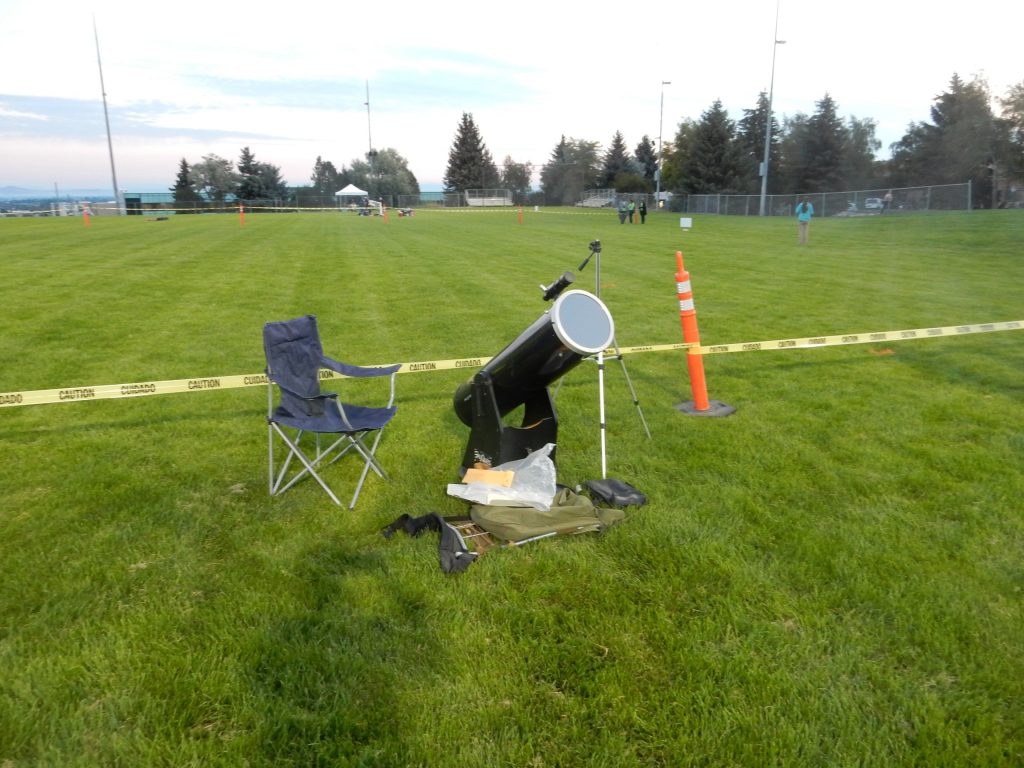
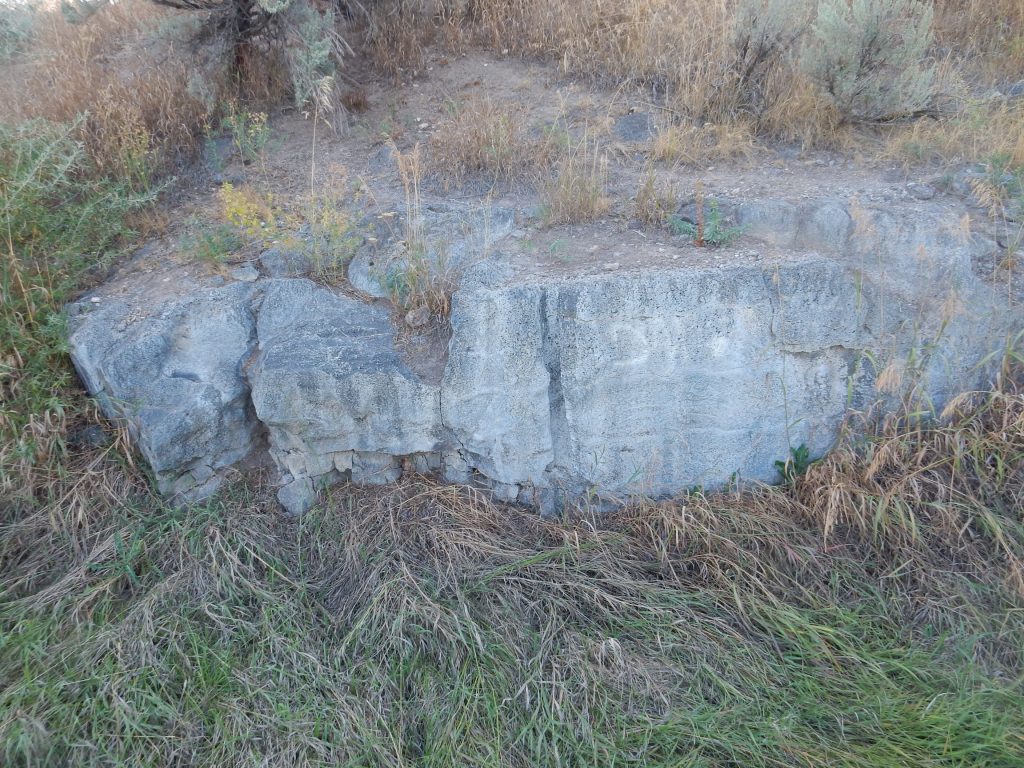
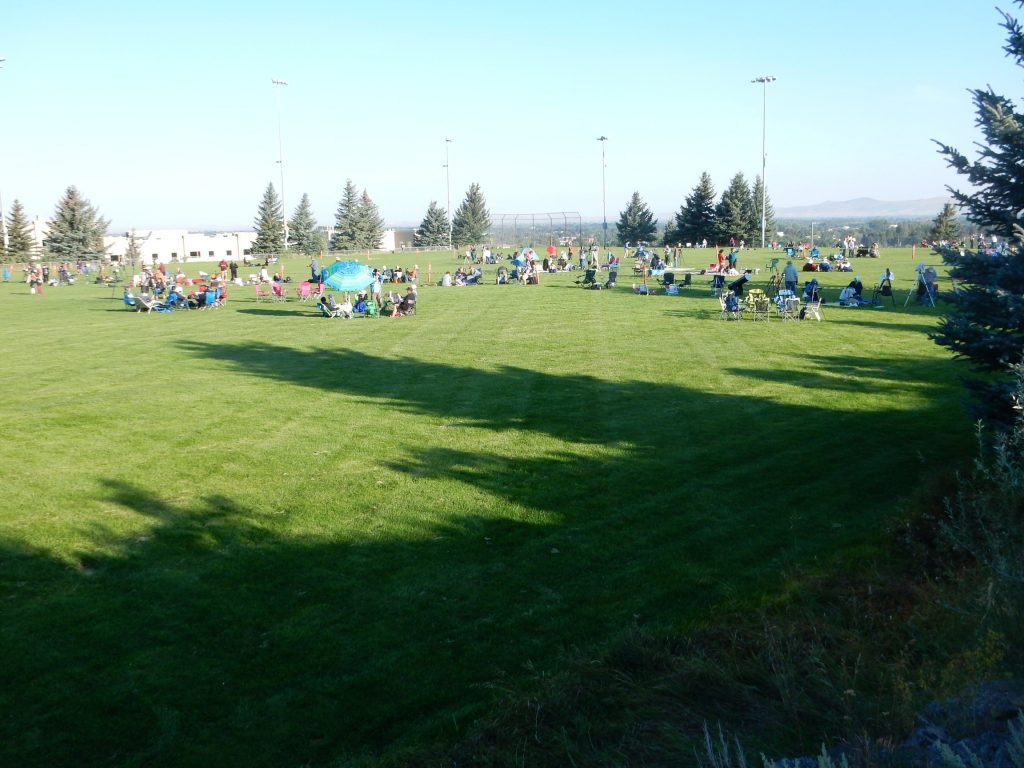
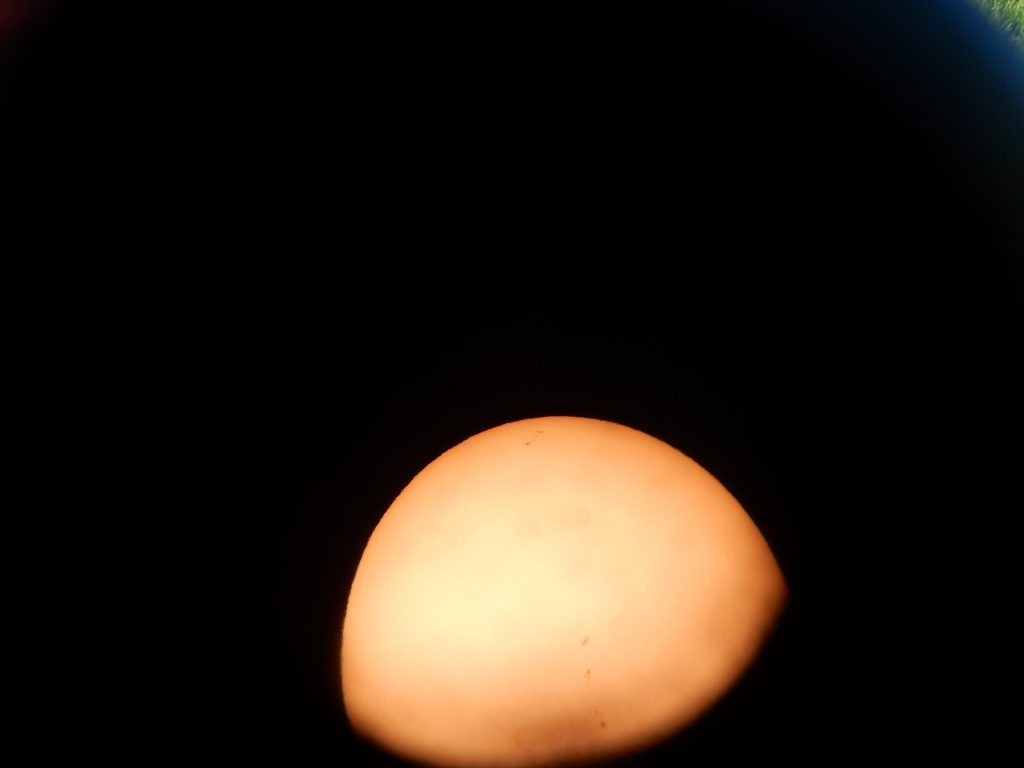
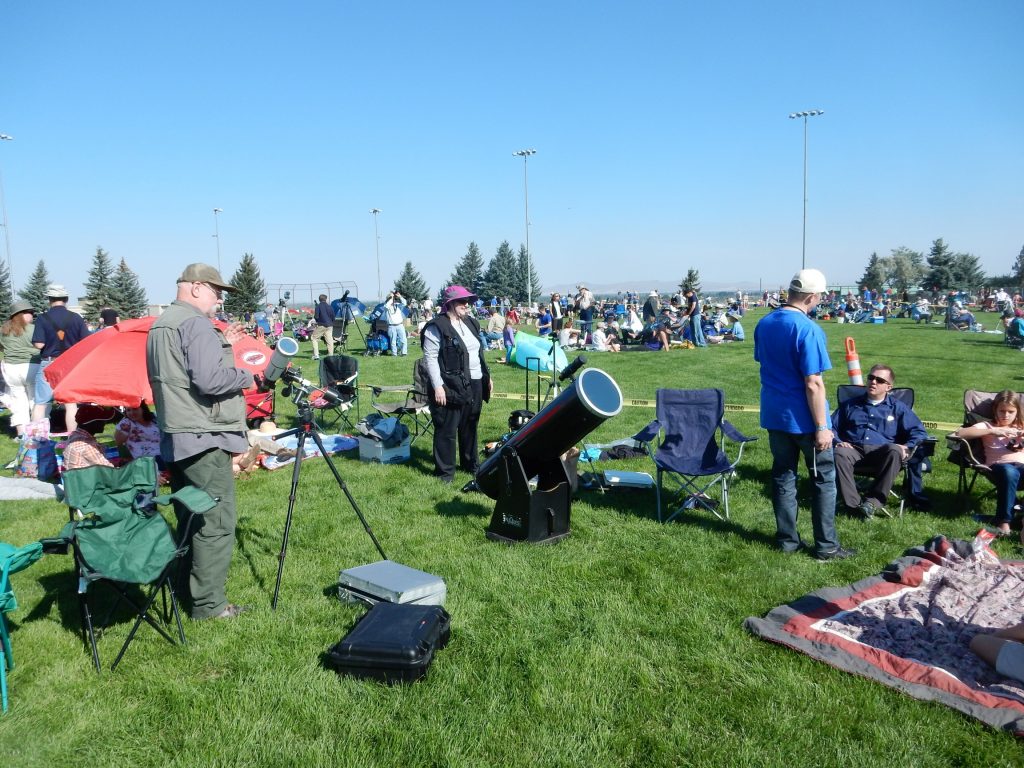
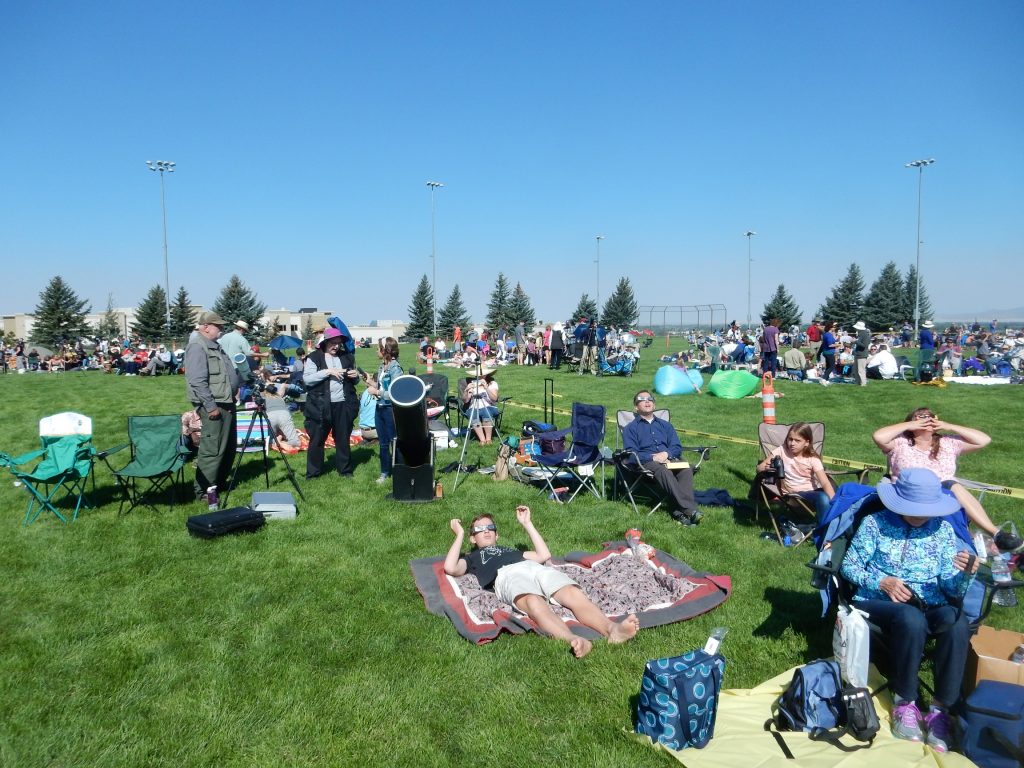
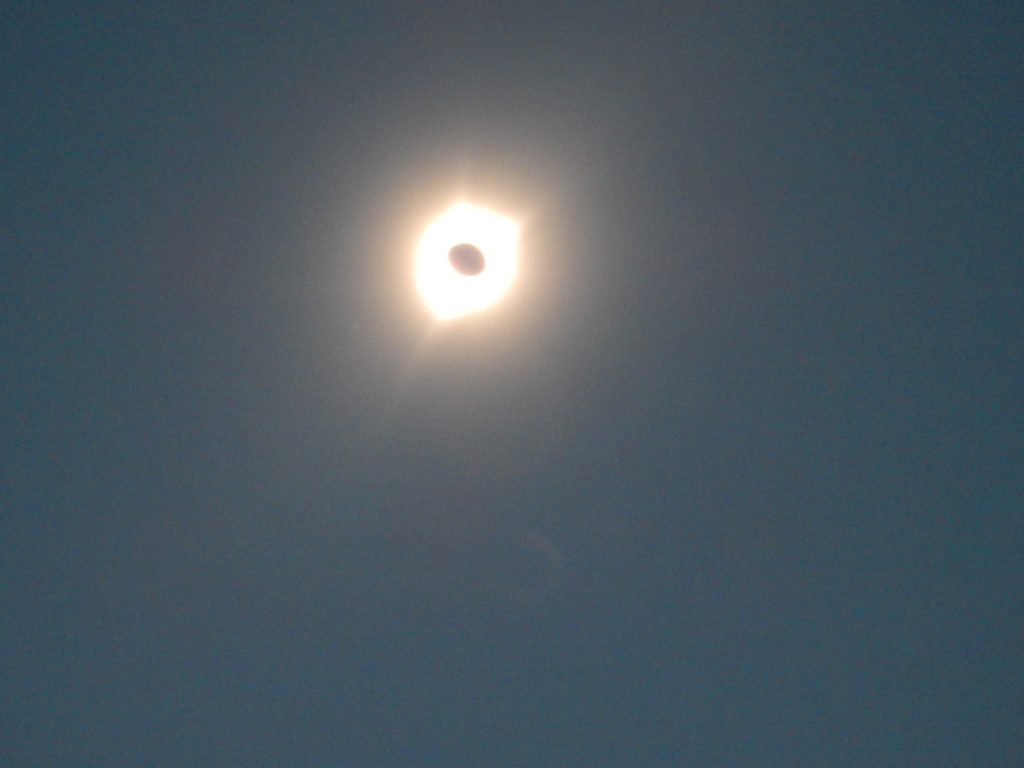
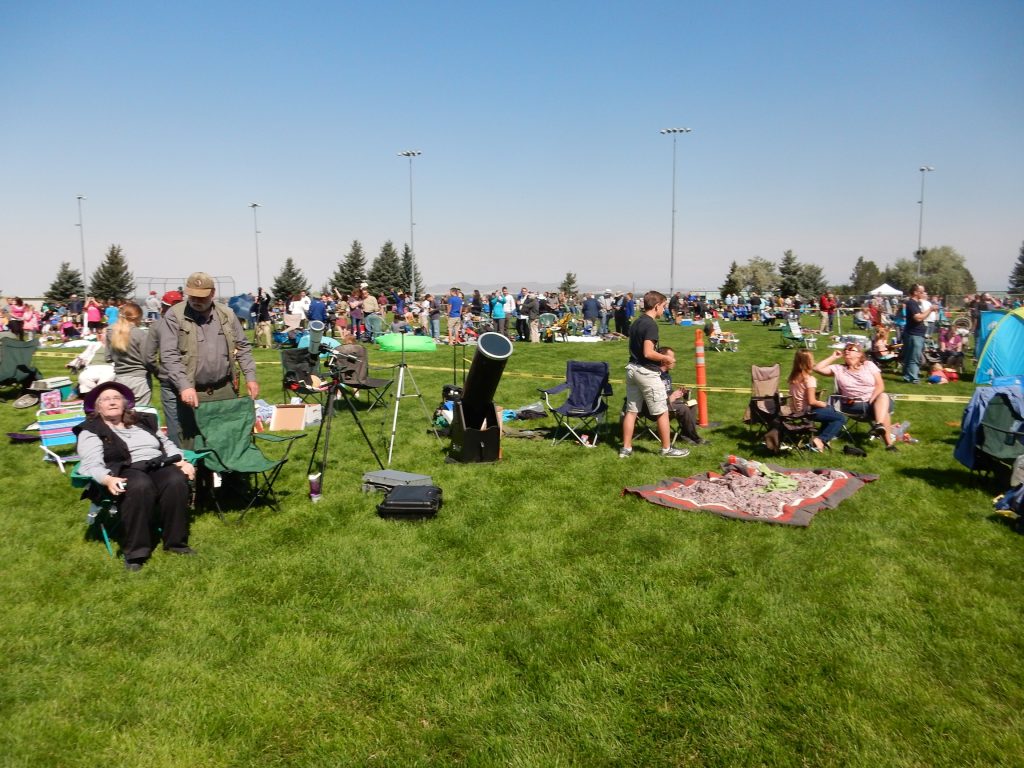
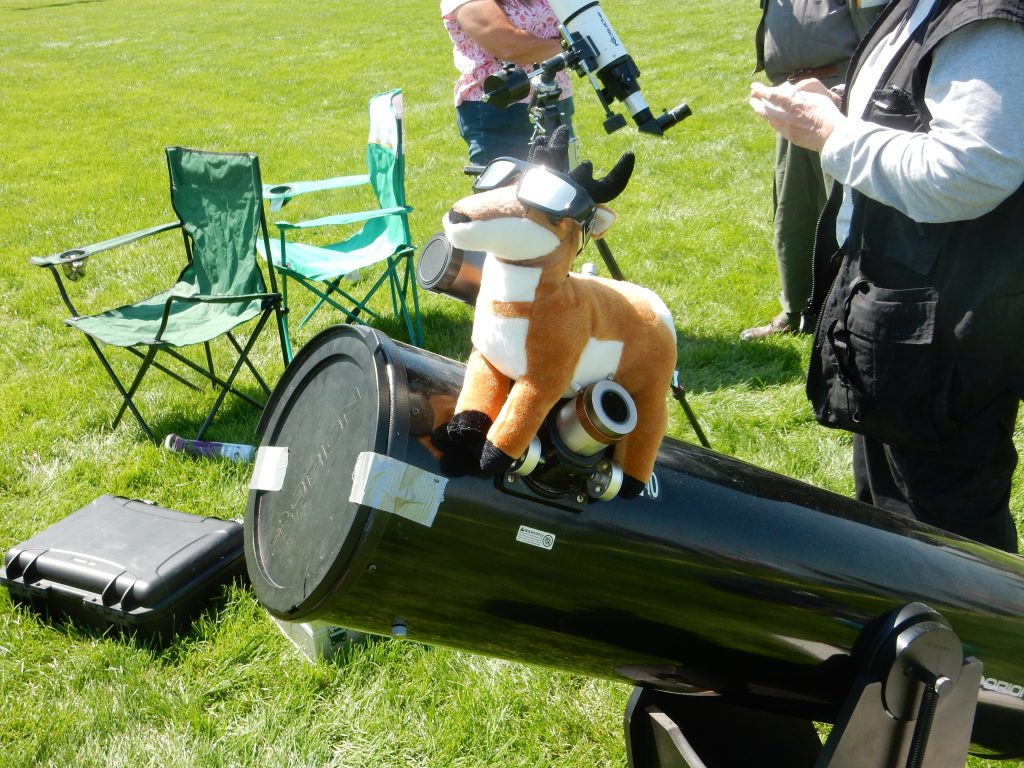
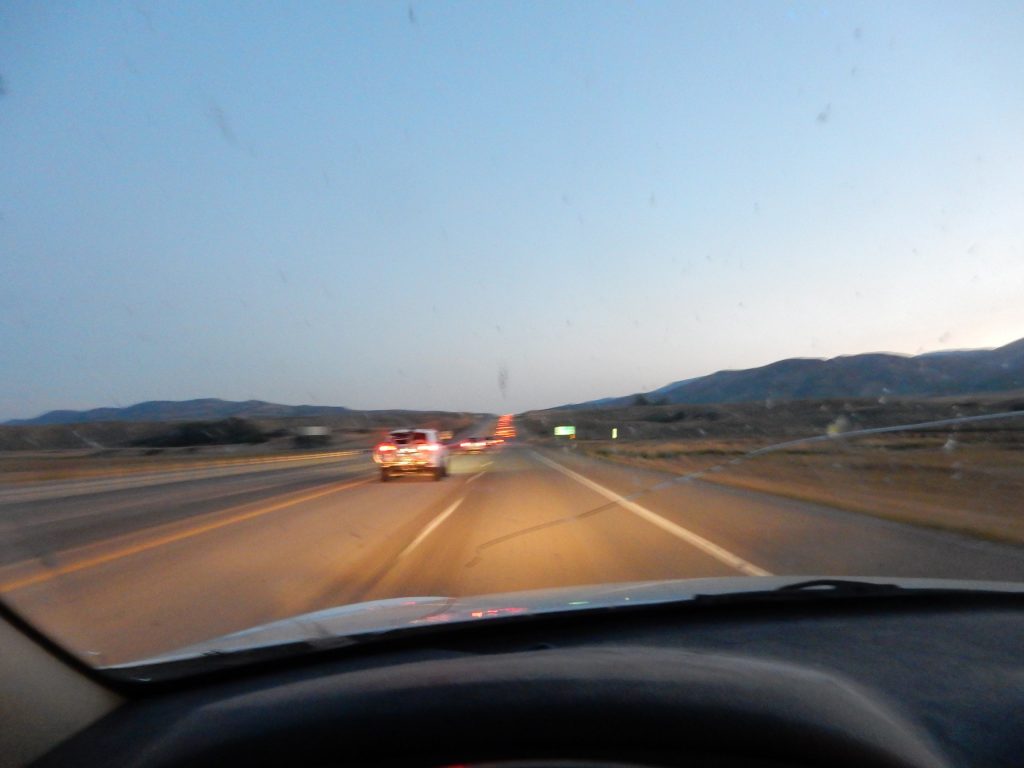
Pingback: Great American Eclipse wanderlust, day 10 | Wanderlusting the Jemez
Apparently the balloon we saw was part of a NASA program to study the possibility of life on Mars. Sounds strange but there’s an explanation
https://www.nasa.gov/ames/feature/eclipse-balloons-to-study-effect-of-mars-like-environment-on-life
PS: The plush pronghorn’s name is “Sunchaser”
Pingback: Great American Eclipse wanderlust, days 12 and 13 | Wanderlusting the Jemez